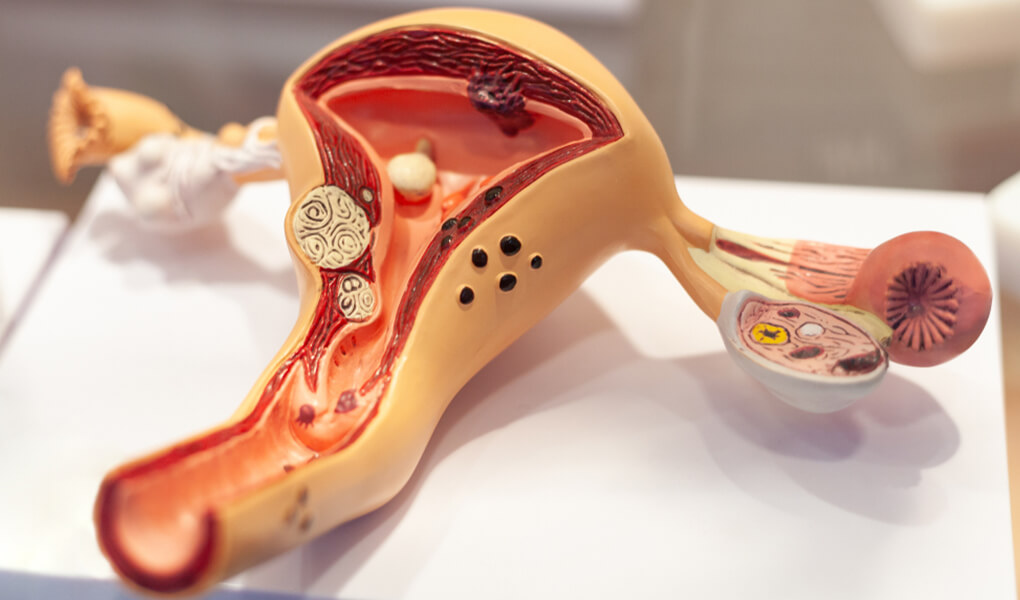Follow Us!
Patient stories, informative videos and much more on our social media accounts

According to WHO (World Health Organization) data, one in every six people dies due to cancer today. Uterine cancer is one of the most common cancers in women and is the 4th most common cancer in women in our country.
Uterine cancers are primarily divided into two categories: those originating from the mucosa that lines the uterus, called the endometrium, and those originating from the muscular layer of the uterus, called the myometrium.
Those originating from the muscular layer of the uterus are called “sarcomas.” Sarcomas are less common, more aggressive, and generally harder to treat.
Endometrial cancers, also known as carcinomas, especially occur after menopause. Early diagnosis can lead to complete treatment.
The endometrium is the layer where the fertilized egg implants and the fetus develops. In women of reproductive age, estrogen and progesterone hormones secreted by the ovaries play coordinated roles in preparing and thickening the endometrium for pregnancy, and if pregnancy does not occur, in shedding it during menstruation.
This layer proliferates every month in preparation for a possible pregnancy and, if pregnancy does not occur, it is shed from the body during menstruation.
However, sometimes the endometrial cells proliferate uncontrollably, forming a tumor. If left untreated, cancer cells can first spread to other layers of the uterus, then to neighboring organs like the ovaries, and later to distant organs such as the lungs (metastasis).
The exact reason for the uncontrolled proliferation of endometrial cells is unknown. It is believed that an imbalance in estrogen-progesterone levels, with a predominance of estrogen, may contribute to the development of endometrial cancer.
Therefore, prolonged exposure to high levels of estrogen, or hormone replacement therapies that contain only estrogen without progesterone, may increase the risk of the disease.
The most common symptom, especially after menopause, is vaginal bleeding. Any abnormal vaginal bleeding, such as spotting, light pink color, or heavy or irregular bleeding, should be evaluated by a doctor.
In women of reproductive age, the most common symptom is irregular bleeding between menstrual periods. Additionally, though less common, symptoms like bloating, pain in the lower abdomen or pelvis, and unexplained weight loss may also occur. The symptoms may vary depending on the stage of the disease and the organs to which it has spread.
Risk factors can increase a person’s likelihood of developing uterine cancer, but not every woman with these risk factors will necessarily develop the disease.
If you experience any of the above-mentioned symptoms, it is important to consult a doctor without delay. Uterine cancer can be treated effectively with early diagnosis.
The structure and thickness of the endometrium are examined using ultrasound. If a suspicious condition is detected, an endometrial biopsy is performed for a definitive diagnosis.
During a biopsy, a sample is taken from the uterine mucosa using a thin tube. This procedure does not require anesthesia. If sufficient tissue cannot be obtained, dilation and curettage (D&C) is performed to collect another sample from the area.
Dilation and curettage (D&C) is done under anesthesia in an operating room. Samples are taken from the entire uterine wall and sent for pathological examination.
A definitive diagnosis is made by microscopic examination in pathology. If the presence of the disease is confirmed, further tests will be requested by your doctor to determine the stage of the cancer.
The stages of endometrial cancer are as follows:
Stage I: Confined to the uterus.
Stage II: Spread to the cervix.
Stage III: Spread to the fallopian tubes, ovaries, vagina, or lymph nodes.
Stage IV: Spread to nearby organs like the bladder or colon, or to distant organs such as the lungs or groin lymph nodes.
Treatment options vary depending on several factors such as the stage of the disease, the patient’s age, other accompanying health conditions, and whether the patient wants to have children. Based on the patient’s condition, one or more treatment options such as surgery, chemotherapy, radiotherapy, or hormone therapy may be applied.
Surgery: The main treatment for endometrial cancer. A procedure called hysterectomy is performed, in which the uterus and cervix are removed. Ovaries are often removed as well.
If necessary, lymph nodes in the pelvis and abdomen may also be removed. Minimally invasive surgical methods such as laparoscopy or robotic surgery may also be used. Pathological examination of the tissues removed during surgery helps determine the exact stage of the disease.
Radiotherapy: If the doctor believes that the disease may recur after surgery, radiotherapy may be recommended. Radiotherapy is also beneficial for patients who are not suitable candidates for surgery.
Chemotherapy: The use of drugs to treat cancer. Chemotherapy is generally applied in more advanced stages (Stage III and IV) or when the disease recurs after initial treatment.
The number of drugs used may vary depending on the patient and the stage of the disease, and chemotherapy often involves the use of drug combinations. Chemotherapy is not localized like surgery or radiotherapy, and the drugs are spread throughout the body via the bloodstream, affecting cancer cells that have metastasized.
Hormone Therapy: High doses of progesterone may be used to stop the spread of cancer cells to other parts of the body. If the tumor is suitable and has not spread to the uterine wall, fertility-preserving treatment may be applied instead of surgery for patients who wish to retain their fertility. The response to high-dose progesterone is closely monitored, and pregnancy may also be possible.
While it is not possible to completely prevent uterine cancer, you can reduce some of the risks you carry. If you are overweight, for example, you can focus on healthy eating to lose weight and avoid fatty foods.
It is known that fatty diets and obesity increase estrogen levels in the body, raising the risk of uterine cancer. It is estimated that about 6,000 cancer cases related to obesity are diagnosed annually in our country.
Cancer related to obesity tends to affect women more. Ovulation disorders also increase estrogen exposure, which raises the risk of uterine cancer.
Polycystic ovary syndrome causes ovulation irregularities, and treating this condition can also reduce the risk of uterine cancer.
Regular gynecological exams, regular smear tests, cervical cancer vaccinations if recommended by your doctor, not ignoring cancer symptoms, and continuing follow-up if you’ve previously been treated for uterine cancer can help reduce your risks.
You can make an appointment with your doctor for a check-up and get more detailed information about uterine cancer and the risks you carry.
For any questions, you can contact us at 444 39 49.
Let us call you as soon as possible regarding the issues you want to consult.


